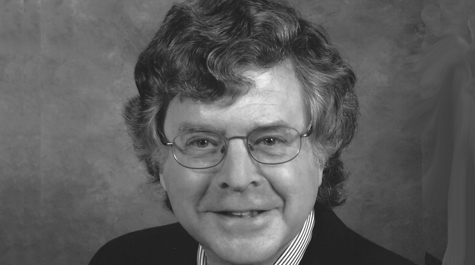Joel Levine joins ‘Hidden Figures’ women in NASA Langley Hall of Honor
Joel Levine, research professor in William & Mary’s Department of Applied Science, is being honored for a NASA career that spans four decades.
Levine will be inducted June 1 into the Langley Research Center Hall of Honor Class of 2017. The group comprises more than 30 other honorees from NASA and its predecessor agency, the National Advisory Committee for Aeronautics (NACA).
Levine’s Hall of Honor classmates include the women “calculators” featured in the book and movie Hidden Figures, Katherine Johnson, Dorothy Vaughan and Mary Jackson. Earlier this year, Levine hosted a screening of Hidden Figures at the Kimball Theatre, followed by a discussion of the early days of Langley.
“I am truly humbled and honored to be included among the 37 researchers in the NACA/NASA Langley Hall of Honor on this, the centennial anniversary of this historic aeronautics and space research center,” Levine said.
Levine joined the Langley Research Center in July 1970 and was assigned to the Aeronomy Section of the Planetary Physics Branch, which became part of the new Environmental and Space Sciences Division. He remained in the science organization for 41 years, until his retirement in 2011.
After retiring, he came to William & Mary’s Department of Applied Science where he applies his NASA experience in a number of situations including team-teaching an undergraduate course, Planetary Geology, with Chuck Bailey, chair of the university’s Department of Geology. Levine and Bailey organized students into teams and assigned each with plotting out “field trips” for potential use by the first humans to land on Mars.
Levine remains active with NASA even after retirement. He is the organizer and co-chair of the NASA Workshop on Dust in the Atmosphere of Mars and Its Impact on Human Exploration, at the NASA Johnson Space Center in Houston, Texas, on June 13-15, 2017.
Levine’s legacy includes developing numerical models of the upper atmosphere of Mars for the Viking Project Scientist for the Viking 1 and 2 Mars Orbiter and Lander Missions and being selected as guest investigator on the Orbiting Astronomical Observatory Copernicus to measure and monitor the density and distribution of atomic hydrogen, the major gas in the upper atmosphere of Mars.
From 2007 to 2009, Levine was detailed to NASA headquarters as program scientist for the Mars Scout Program, Mars Exploration Program and Science Mission Directorate. He was selected as co-chair of NASA’s Human Exploration of Mars Science Analysis Group, work that formed the basis of a book, The Human Mission to Mars: Colonizing the Red Planet, edited by Levine and Harvard astronomy professor Rudolf Schild.
He’s made completely Earth-bound contributions, as well. In 1998, Levine was asked by the National Archives and Records Administration (NARA) to investigate mysterious tiny white spots appearing in the hermetically sealed cases holding the Declaration of Independence, the U.S. Constitution and the Bill of Rights. Levine and his team used NASA gas detection instrumentation to discover that spots resulted from water vapor in the encasement atmosphere reacting with the encasement glass, causing alkaline material to leach out of the glass as tiny white particles. As a result of the NASA detective work, NARA reduced the water vapor content and the problem was solved.
Levine has given two presentations for Technology, Entertainment and Design (TED) on Martian exploration. His 2009 TED talk, “Why We Need to Go Back to Mars” (has over 600,000 viewings and is ranked as one of the top 100 talks on the TED web site of 3,000 talks. His 2015 TED talk, “The Exploration and Colonization of Mars by Humans: Why Mars? Why Humans?” has over 55,000 viewings.
This story was based on material from NASA Langley.
 Skip to main content
Skip to main content

